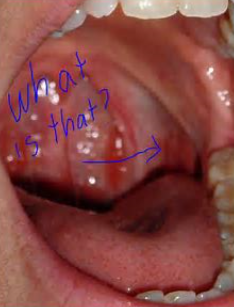Human herpesvirus-6A/B binds to spermatozoa acrosome and is the most prevalent herpesvirus in semen from sperm donors.
http://www.ncbi.nlm.nih.gov/pubmed/23144982
PLoS One. 2012;7(11):e48810. doi: 10.1371/journal.pone.0048810. Epub 2012 Nov 7.
PLoS One. 2012;7(11):e48810. doi: 10.1371/journal.pone.0048810. Epub 2012 Nov 7.
Abstract
An analysis of all
known human herpesviruses has not previously been reported on sperm from
normal donors. Using an array-based detection method, we determined the
cross-sectional frequency of human herpesviruses in semen from 198
Danish sperm donors. Fifty-five of the donors had at least one ejaculate
that was positive for one or more human herpesvirus. Of these 27.3%
(n = 15) had a double herpesvirus infection. If corrected for the
presence of multiple ejaculates from some donors, the adjusted frequency
of herpesviruses in semen was 27.2% with HSV-1 in 0.4%; HSV-2 in 0.1%;
EBV in 6.3%; HCMV in 2.7%; HHV-6A/B in 13.5%; HHV-7 in 4.2%, whereas
none of the samples had detectable VZV or HHV-8. Subsequently, we
examined longitudinally data on ejaculates from 11 herpesvirus-positive
donors. Serial analyses revealed that a donor who tested positive for
herpesvirus at one time point did not necessarily remain positive over
time. For the most frequently found herpesvirus, HHV-6A/B, we examined
its association with sperm. For HHV-6A/B PCR-positive semen samples,
HHV-6A/B could be detected on the sperm by flow cytometry. Conversely,
PCR-negative semen samples were negative by flow cytometry. HHV-6B was
shown to associate with sperm within minutes in a concentration
dependent manner. Confocal microscopy demonstrated that HHV-6B
associated with the sperm head, but only to sperm with an intact
acrosome. Taken together, our data suggest that HHV-6A/B could be
transported to the uterus via binding to the sperm acrosome. Moreover,
we find a 10 times higher frequency of HHV-7 in semen from healthy
individuals than previously detected. Further research is required to
determine the potential risk of using herpesvirus-positive donor semen.
Longitudinally analyses of ejaculate series indicate that implementation
of quarantine for a donor shown to shed a herpesvirus is not a tenable
solution.











